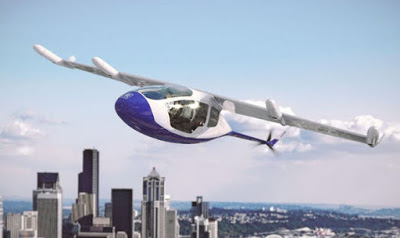
(adsbygoogle = window.adsbygoogle || []).push({});
(adsbygoogle = window.adsbygoogle || []).push({});
Rolls said it hoped to manufacture a prototype version of its electric vertical take-off and landing (EVTOL) vehicle within the next 18 months, and could potentially take to the skies in the early 2020s.
The Rolls-Royce EVTOL plane will seat four or five people, with a flying range of 500 miles (805 kilometres) and a top speed of 200 miles per hour.
“In this market, you will see something like this flying within three to five years, and we will demonstrate the system in two years,” said Rob Watson, head of Rolls-Royce’s electrical team.
(adsbygoogle = window.adsbygoogle || []).push({});
“At the end of next year we will be flight ready,” he told AFP at the group’s Farnborough chalet.
The hybrid vehicle, which has so far cost single-digit millions of pounds to develop, will use a traditional gas turbine engine with an electrical system wrapped around it.
Rolls-Royce is also researching an all-electric product but that is not as advanced as the EVTOL offering.
“There is an emerging market for all-electric planes but we believe that you need a level of requirement that an all electric system cannot really provide today,” Watson told AFP.
(adsbygoogle = window.adsbygoogle || []).push({});
“So, all-electric is the way to hop around within a city, but if you want to travel 200 or 300 miles, if you want to run London to Paris, then you are going to want to run something that will give you that range.
“So we think you will see hybrid propulsion systems starting to make this market.”
(adsbygoogle = window.adsbygoogle || []).push({});











